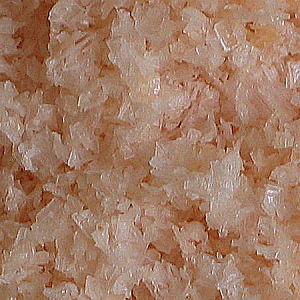Cumin 101

Cumin has been around for a very long time in the culinary and medicinal worlds. The Bible cites cumin in both the New and Old Testaments. Aside from the culinary aspects, cumin was used for paying tithes to the priests and also as part of the recipe for embalming in Egypt. Now that is what I cal multi-tasking!
Cumin hails as a seed from a small umbelliferous (having flower heads shaped like an upturned umbrella!) plant. The seeds have a striped pattern of nine ridges and oil canals. If you look closely you will see tiny hairs on the seed pods. They resemble caraway seeds, but are lighter in color. They are available dried, or ground to a brownish-green powder. It is always best to buy whole seeds and grind them with a mortar and pestle, but if you must buy already ground, look for the bright fresh color, a tan/green, and look for a jar with an expiration date.
According to some sources, cumin is a healthy spice to add to your diet. High in both iron and manganese, this herb also aids in digestion and has been linked to cancer prevention as well. Let the goodness not stop there, though, because cumin also has a history for being an aphrodisiac when mixed with honey and pepper!
Cumin is most often called for in recipes from the Indian cuisine, as well as Middle Eastern and Arabic. Commonly paired with it's tasty cohort, corriander, the spice is piquant and zesty, with a low heat, and is most noted in curries and "chili" recipies.
 Roasted Potatoes with Honey, Cumin and Pepper:
Roasted Potatoes with Honey, Cumin and Pepper:
 I roast potatoes every weekend. I generally cut them as you see above, with slices along the ridge, and they get mighty crunchy that way. For the blog today I prepared them with the following:
I roast potatoes every weekend. I generally cut them as you see above, with slices along the ridge, and they get mighty crunchy that way. For the blog today I prepared them with the following:
2 Tablespoons of honey
1 teaspoon of cumin
generous helping of cracked pepper
I drizzled this mixture over a batch of roasted taters comprised of about 4 large russets.
I am sitting here waiting for the "ahem" buzz...
Cumin hails as a seed from a small umbelliferous (having flower heads shaped like an upturned umbrella!) plant. The seeds have a striped pattern of nine ridges and oil canals. If you look closely you will see tiny hairs on the seed pods. They resemble caraway seeds, but are lighter in color. They are available dried, or ground to a brownish-green powder. It is always best to buy whole seeds and grind them with a mortar and pestle, but if you must buy already ground, look for the bright fresh color, a tan/green, and look for a jar with an expiration date.
According to some sources, cumin is a healthy spice to add to your diet. High in both iron and manganese, this herb also aids in digestion and has been linked to cancer prevention as well. Let the goodness not stop there, though, because cumin also has a history for being an aphrodisiac when mixed with honey and pepper!
Cumin is most often called for in recipes from the Indian cuisine, as well as Middle Eastern and Arabic. Commonly paired with it's tasty cohort, corriander, the spice is piquant and zesty, with a low heat, and is most noted in curries and "chili" recipies.
 Roasted Potatoes with Honey, Cumin and Pepper:
Roasted Potatoes with Honey, Cumin and Pepper: I roast potatoes every weekend. I generally cut them as you see above, with slices along the ridge, and they get mighty crunchy that way. For the blog today I prepared them with the following:
I roast potatoes every weekend. I generally cut them as you see above, with slices along the ridge, and they get mighty crunchy that way. For the blog today I prepared them with the following:2 Tablespoons of honey
1 teaspoon of cumin
generous helping of cracked pepper
I drizzled this mixture over a batch of roasted taters comprised of about 4 large russets.
I am sitting here waiting for the "ahem" buzz...








